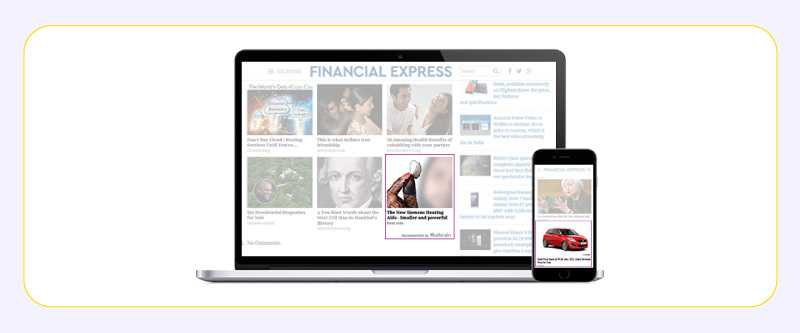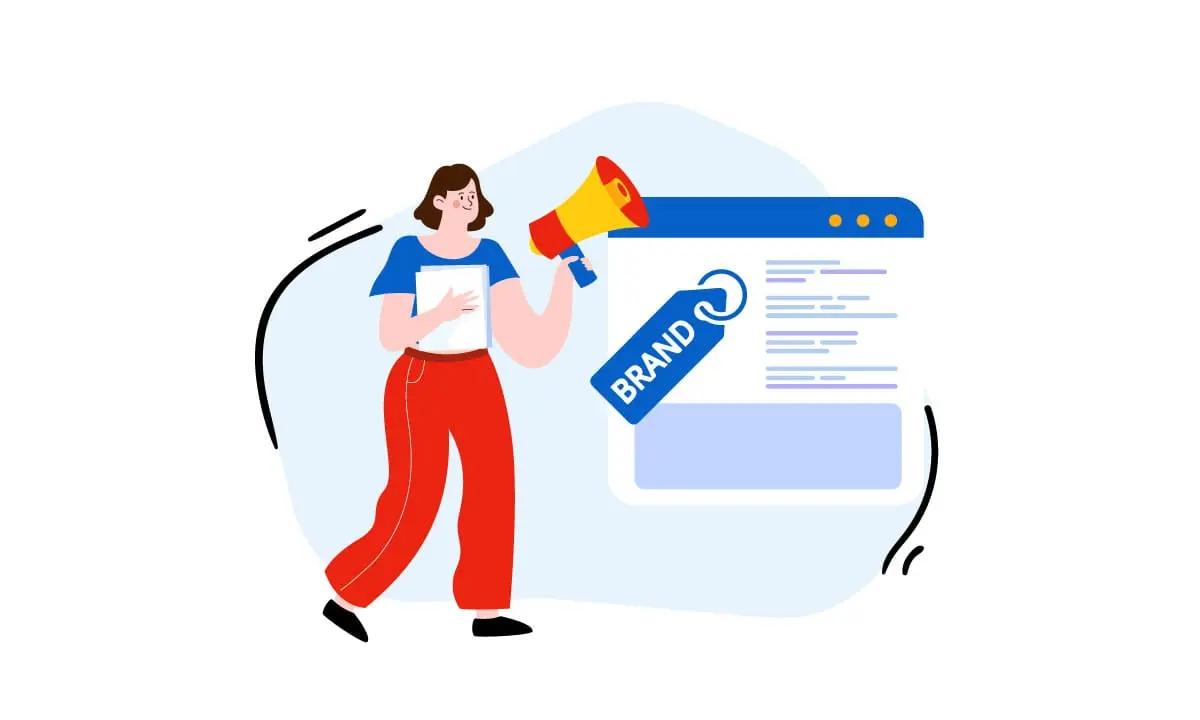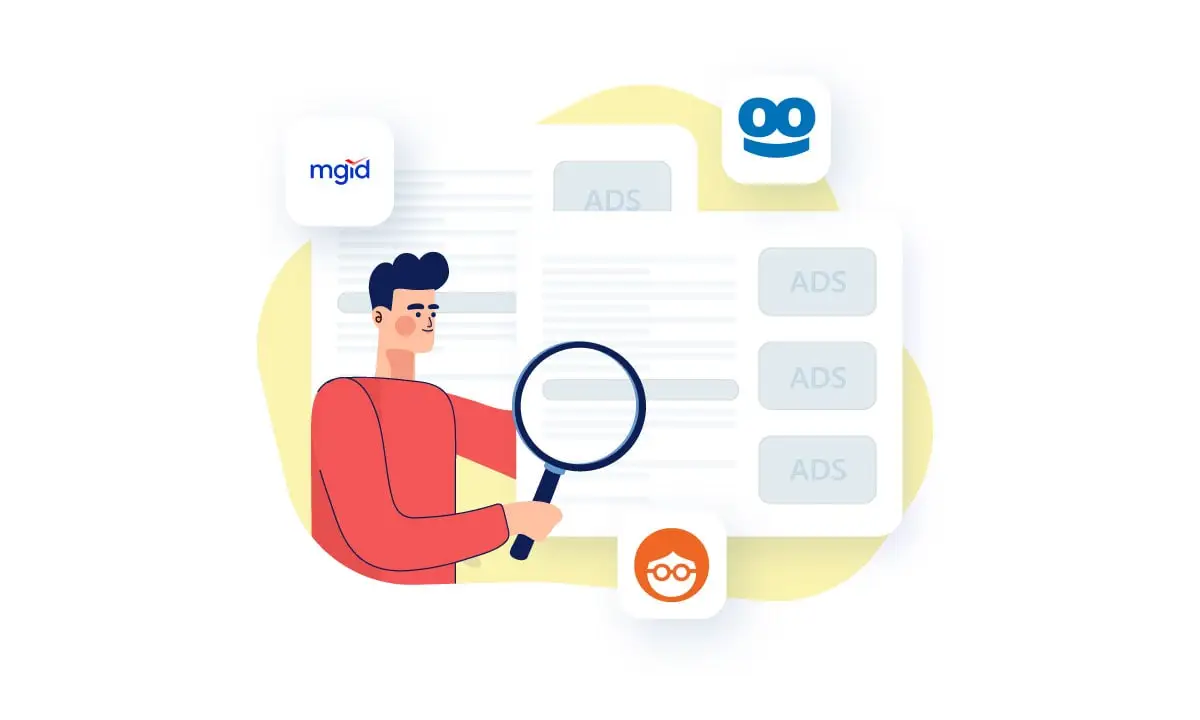Native advertising has gained significant popularity among businesses and advertisers over the past decade and is now regarded as one of the most effective digital advertising solutions. The ads of these kind perform better in almost every metric than other forms of advertising, and major platforms keep finding new, innovative ways to implement them with more advanced features.

The roots of native advertising go way back to a time when digital marketing didn’t even exist, but now, native is fused with digital platforms which makes it more widely available and very easy to run and manage without having to do lengthy negotiations with publications and third-party marketers. The modern form of native, commonly known ad programmatic native ads, is the most popular form of this ad type which is highly automated and easy to work with. Let’s dive deeper into it to learn how it works and what benefits it has for advertisers and businesses.
What are native ads?
Before getting to the “programmatic” part, let’s answer the question of “What is native ads?” first. Native ads are a kind of paid promotion which are designed to have similar look, feel, and function to the environment of the platform they’re being served on. To the average user, they’re not easily distinguishable than their surrounding organic content, and they tend to bring value to users by helping them solve a common problem. Although it’s worth mentioning that not all native ads focus on bringing value (like paid search ads). The whole concept of native advertising revolves around low-key promotion of a brand, product, or service without looking or sounding like an obvious sales pitch.
Native advertising traces its roots back to the 20th century, when companies like Cadillac began ordering sponsored articles on major publications. These articles, known ad advertorials, looked just like other editorial pieces of a magazine or a newspaper, and even their content felt like they were really written by a journalist, but actually, they subtly promoted the sponsor brand by telling interesting brand stories or representing their products as great solutions for common issues.

Nowadays, native advertising is present on almost every major online platform including publication websites, e-commerce stores, search engines, and social networks. They can have many shapes and forms based on where they’re served, but they all follow the principle of not looking, sounding, and feeling like an ad. This may sound deceitful to some people because it feels like they fool the audience by disguising as an organic post. But you should know that advertising platforms are obliged by authorities to tell their user base that they’re seeing ads in one way or another. The most common form are small indicators like “Ads” or “Sponsored” tags in each native ad unit.
What are native ads good for?
So, why native ads are created in the first place? You’ve definitely realized by now that advertisements are literally everywhere. The websites you visit, the TV channels you watch, the social apps you use, even the journey to your workplace always contain different kinds of ads designed to attract your attention in every possible way. Advertising is a gigantic industry with billions of dollars in revenue each year. Companies are constantly seeking new ways to reach and attract more customers, and advertising channels and platforms continuously come up with new advertising solutions to help businesses and customers find each other better and faster.
Their efforts have become increasingly overwhelming for people at the receiving end of advertisements. People have gradually gotten exhausted of seeing ads in everywhere they look, resulting in a phenomenon known as ad fatigue and numbness. At best, they simply ignore every ad they encounter in their everyday lives, or worse, they actively try to get rid of them by using different means of blocking ads.

To be honest, they rightfully do so. Advertisements are not just everywhere. They’ve become also become very annoying, especially in the digital landscape. Pop-up ads are great examples of how the advertising world has pushed things too far. Most ads interrupt people when visiting an online platforms and have a very negative impact on the user experience. Besides, people are sick of clicking on ads that give false promises. Luckily for them, blocking digital ads is very easy with tools like ad blocker browser extensions.
All and all, these are very serious issues for the multi-billion-dollar advertising industry, and native advertising emerged as an effective remedy. Native ads are non-disruptive and feel natural to users. Since they blend in with other organic content, they can’t be easily blocked, and surprisingly, people are way nicer to them than normal ads. Although people know that they’re watching ads, they appreciate their non-disruptive nature and the value they bring. This has resulted in native ads being one of the highest performing ad types in almost every metric including click-through-rate and impressions.
What are programmatic native ads?
As mentioned earlier, native ads could have different shapes depending on where they’re going to appear. Advertorials in magazines are considered native ads, just as sponsored search results on Google and Bing are considered native ads. But digital marketing has a big advantage here considered to traditional outlets when it comes to native, and that is programmatic native advertising. Programmatic advertising in general is the automated process of buying and selling digital ads using an auction and bidding system.

This is the common practice between almost every major advertising platform including Google, Facebook, TikTok, etc. In this process, you set a budget, define your target audience, and provide the platform with your ad’s assets, and bid for advertising spots or opportunities (like placements and keywords). Once there’s a chance for your ad to be shown to a user, the system automatically enters you in an auction against other advertisers. If you win, your ads will be shown to the user. Automated systems use advanced machine learning and analyzing techniques to decide when your ads should enter the auctions. The result is hyper flexible and easy advertising that is far more accurate than manually placing ads in front of people.
The emergence of programmatic native – and programmatic advertising in general – is the direct response to the huge demand for advertisement spots in the digital landscape. The days of directly contacting website owners individually and negotiate for ad opportunities are long gone. Now is the era of large online platforms with networks consisting of a myriad of websites, apps, and services with millions of visitors and users. Programmatic advertising has significantly streamlined the process of running campaigns and self-serve advertising is now easy and highly available thanks to it.
Different ad types and formats are supported by programmatic, including native ads. Prior to this, you had to do lengthy negotiations with publications and third-party platforms and pay much more money for your ads to appear between editorial content. Now, with programmatic native advertising, you can skip this entire process and have much more control over who sees your ads and when. You can easily manage your ad spending and have much more creative freedom when designing your ads.
Conclusion
To sum it up, programmatic native advertising is a type of native advertising that no longer requires you to contact and negotiate with publications to feature your native ads on their platforms. Almost the entire process is automated; You set a budget, a target audience, and a bid for your preferred placements and provide your assets. The real-time bidding system analyzes user behavior and queries to decide with ads should be displayed to them, then picks relevant ads and enters them in an auction against each other to determine which ones should be served. Programmatic ads are easier to set up and are much more flexible and accurate than traditional manual placement.
FAQs
What is the difference between programmatic and native advertising?
Programmatic advertising is the automated process of buying and selling digital ads based on real-time bidding and data analysis. Contrary to manual placement where you negotiate with a publication to put your native ads on their outlets, programmatic advertising is almost fully automated. Many different ad types and formats are supported by this method, including native ads. So [digital] native ads are considered a subset of programmatic advertising.
What are examples of programmatic native ads?
Almost every major digital advertising platform uses programmatic advertising. Facebook Ads and Google Ads are some of the best examples. The paid search ads you see on result pages or in-feed ads you encounter on your Facebook feed that look like normal posts are instances of programmatic native ads, meaning advertisers have placed bids for those spots and won in the auction.
Does programmatic advertising work?
Programmatic advertising has much more flexibility and accuracy than manual placements. You can narrow down your audience, have more creative freedom when designing ads, and run campaigns with reasonable costs. It’s also less time-consuming and much easier than traditional advertising where you have to negotiate with the publications.







 Facebook Ads Spy Tool
Facebook Ads Spy Tool TikTok Ads Spy Tool
TikTok Ads Spy Tool
4 thoughts on “What Are Programmatic Native Ads And How Do They Work?”
People are always complaining about big tech companies taking over the world. Well, as someone who’s been doing marketing and advertising for a while, gotta say I truly appreciate programmatic advertising. You have no idea how difficult and overwhelming it was to run a single campaign on multiple outlets.
Hi Lærke Thanks for your comment. You’re surely right. Programmatic has truly simplified self-serve advertising and made wide-scale marketing across large networks possible.
Hey, I’ve been hearing a lot about native programmatic lately. Can you explain what it is and how it works?
Of course! Native programmatic refers to the combination of native advertising and programmatic advertising. It involves using automated technology and algorithms to buy and sell native ad placements in real-time auctions. This allows advertisers to deliver highly relevant and targeted native ads across various websites and apps. It’s an effective way to reach the right audience with engaging and non-disruptive ad formats. Let me know if you have any more questions!